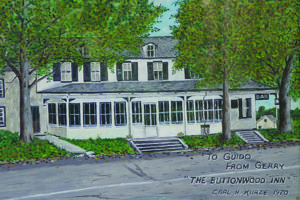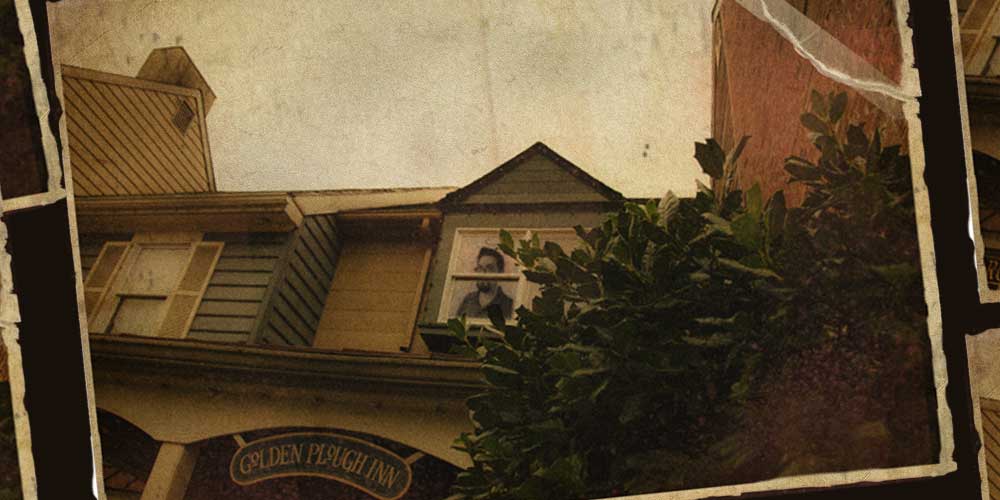The quiet village of Lahaska, Pennsylvania—Bucks County’s very own “Sleepy Hollow” of sorts—got its start when the Buckingham Friends Meeting House was established by English Quakers in 1701. Over time, the town grew to include fifteen houses, a store, a hotel, a coach factory, a few shops, and, in March 1844, its first-ever post office.
Fast forward 179 years to present-day Lahaska, home to the 42 sprawling acres of shops, eateries, and beautiful gardens famously known as Peddler’s Village, and you might notice that much of the town’s history lives on—in the traditions, the architecture, the namesakes, and sometimes even in the spooky tales told by those who live and work in the area.
A chicken farm dubbed “Hentown” in its former life, Peddler’s Village was founded in 1962 by Earl Jamison, who transformed the rundown barn and chicken coops into a charming countryside shopping destination. He worked with the land and the existing architecture, incorporating much of the old structures into the designs of the shops and restaurants visitors enjoy to this day.

The Buttonwood Inn, an early iteration of the Golden Plough Inn. Painting by Carl H. Kurze, 1970.
One such building, the Golden Plough Inn, was originally a two-story stone tavern built in the mid-1800s. It served as a prime stop for stagecoach drivers and their weary passengers traveling between New York and Philadelphia on Old York Road, a busy highway that connected the two cities. Though much of the old inn was transformed and expanded under Earl’s purview, there exists a rumor among staff and visitors that some of inn’s visitors yet linger. In fact, it’s believed that Thomas Betts, the Lahaska Post Office’s first postmaster, still makes his rounds, stopping in through the lobby of the Golden Plough Inn to make his presence known.
Late one evening at the Inn, the night auditor briefly left the front desk, returning to the lobby to find a trail of coffee stirrers meticulously arranged on the floor. They formed a line from the coffee station across the room to the front desk, stopping at a spot where a guest might stand to check in. On other occasions, phone calls from unoccupied rooms have been made to the front desk, and lights and televisions have mysteriously turned themselves on. Guests have also reported a dark figure of a man appearing at the end of the second-floor hallway, just outside room 202.
On one occasion, Inn staff were alerted to loud noises coming from room 202, which at the time was unoccupied. They investigated and found the television had strangely turned itself on. As they entered the room to shut it off, a deep voice intoned: What do you want? Spooked, the staff quickly locked the room back up and left.
Supernatural occurrences have also been reported at the Cock ‘n Bull, the flagship restaurant at Peddler’s Village. In the Twinings dining room specifically, a fun-loving spirit of a little girl has been known to play with silverware and misplace table settings. This same presence reportedly runs the halls of the building’s second floor, where the administrative offices now exist. And in the Cock ‘n Bull’s basement, near the entrance to Peddler’s Pub, a woman in colonial garb has been seen wandering around. She was known for messing with the Pub’s locks; Village staff would have to acknowledge her presence, and only then could the locks be secured without issue.
Whether you visit Peddler’s Village for the first time or the fiftieth time, there’s always something new to discover—even when it comes to spooky stories. This Halloween, keep your eyes and ears out, and you might just go home with a Village tale of your own to tell.
Click below to see the results of an October 2020 investigation by Bucks County Paranormal Investigations!

